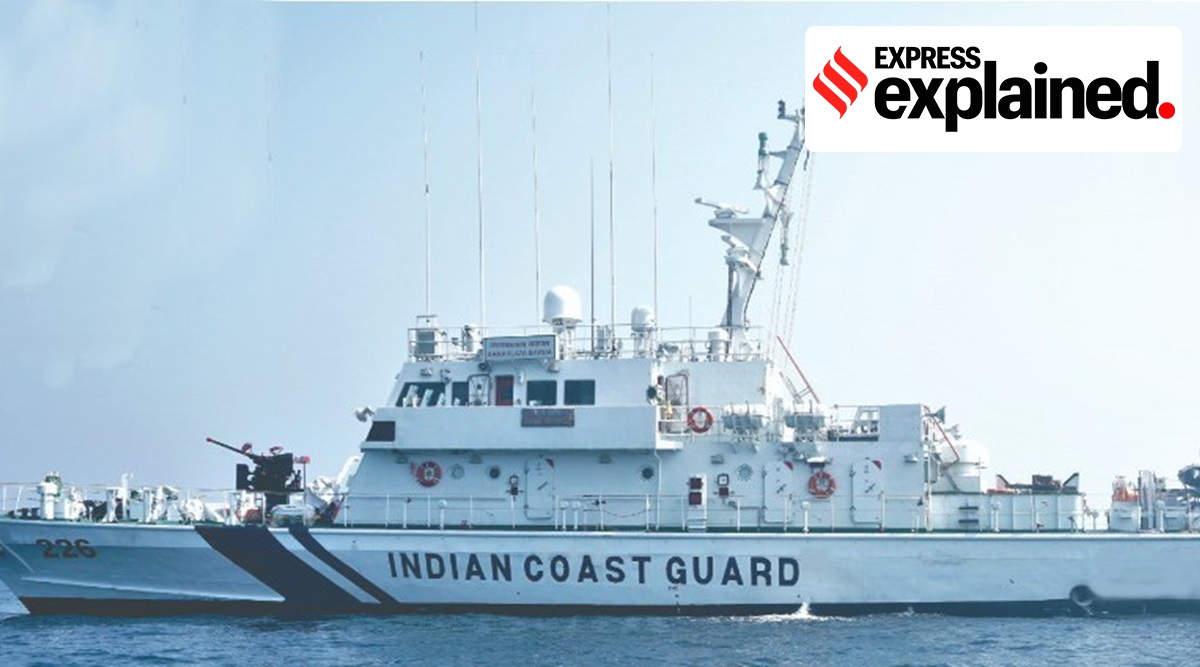
SOURCE: ENS
A Fast Patrol Vessel (FPV) named ICGS Kanaklata Barua was commissioned in the Indian Coast Guard on Wednesday, in Kolkata. It is named after a teenage freedom fighter who was shot dead in Assam during the Quit India Movement.
What is the ship?
It is the fifth and last in a series of FPVs built by Garden Reach Shipbuilders and Engineers (GRSE) Ltd. The other four are ICGS Priyadarshini (named after Indira Gandhi), ICGS Annie Besant, ICGS Kamala Devi (after Kamala Devi Chattopadhyay), and ICGS Amrit Kaur.
These FPVs are upgraded versions of the inshore patrol vessels with a modified form of the hull and can achieve a speed of 34 knots. Such vessels have also been delivered to Indian Navy by GRSE. In the Coast Guard these FPVs and their earlier versions belong to the Rajashree class of patrol vessels. The previous versions were named ICGS Rajashree, Rajtanag, Rajkiran, Rajkamal, Rajdoot, Rajveer etc; the modified versions are named after freedom fighters.
Officials said these are suited for patrolling, maritime surveillance, anti-smuggling, anti-poaching operations and also for fishery protection, and rescue and search missions. These FPVs are medium-range surface vessels with a length of around 50 m, and a displacement of over 300 tonnes.
Who was Kanaklata Barua, after whom it is named?
One of the youngest martyrs of the Quit India Movement, Kanaklata Barua has iconic status in Assam. Barua, then 17, led the Mukti Bahini, a procession of freedom fighters to unfurl the Tricolour at Gohpur police station on September 20, 1942. When police did not let them move forward, an altercation led to firing, killing Barua at the head of the procession.
“She had joined the Mrityu Bahini [a kind of a suicide squad] just two days before the incident,” said Sheila Bora, retired professor of Dibrugarh University, who has authored a monograph on Barua. “The squad strictly admitted members aged 18 and above but Kanaklata was an exception. She wanted to lead the procession and after much persuasion she was allowed to.”
Even as Barua fell to bullets, she did not let go of the flag. “She did not want it to touch the ground. Another woman volunteer behind her — Mukunda Kakoty — came and held the flag, and she, too, was shot,” said Bora.
Also in Explained | What are defence offsets?
How important is her legacy?
“The fact that she was a young girl — that captured the national imagination of the time,” said Avinibesh Sharma, who runs Vintage Assam, a website on Assam’s history. “… It was also a time where you saw a lot of women coming to the fore, leading processions, patriotic fervour was at its peak — and Kanaklata was a product of this time.”
“Today, there are schools named after her, there are two statues, there is a ship. While we see her as an icon now, people in her village hated her then — she was a rebel, who questioned patriarchy.”






